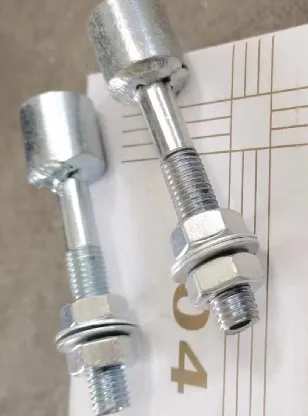loading...
- No. 9, Xingyuan South Street, Dongwaihuan Road, Zaoqiang County, Hengshui, Hebei, China
- admin@zjcomposites.com
- +86 15097380338
- Welcome to visit our website!
Activated Carbon Filtration Systems for Effective Air and Water Purification Solutions
Understanding Activated Carbon Filter Vessels Essential Components in Water and Air Treatment
Activated carbon filter vessels play a pivotal role in the purification of air and water, serving as essential tools in various industrial, commercial, and residential applications. These vessels utilize activated carbon, a highly porous material that excels at adsorbing impurities and contaminants, thereby improving the quality of air and water. This article will explore the features, benefits, and applications of activated carbon filter vessels.
What is Activated Carbon?
Activated carbon, also known as activated charcoal, is derived from carbonaceous materials such as coconut shells, wood, or coal. Through a process known as activation, the carbon is processed to create a vast network of tiny pores, greatly increasing its surface area. This property allows activated carbon to effectively adsorb a wide range of contaminants, including organic compounds, chlorine, volatile organic compounds (VOCs), and various odorous molecules.
Structure of Activated Carbon Filter Vessels
Activated carbon filter vessels are typically cylindrical containers designed to hold activated carbon media. They come in various sizes and configurations to accommodate different flow rates and specific applications. The vessels are constructed from durable materials, such as stainless steel or high-density polyethylene, ensuring their longevity and resistance to corrosion.
Within these vessels, the activated carbon media can be arranged in layers or packed tightly to maximize contact between the air or water flowing through and the carbon particles. Some filter vessels are equipped with additional features, such as pre-filters to remove larger particles and post-filters for final polishing. These augmentations enhance the overall filtration efficiency.
How Activated Carbon Filter Vessels Work
The operation of activated carbon filter vessels is relatively straightforward. When air or water enters the vessel, it passes through the activated carbon media. As it flows, contaminants adhere to the carbon surface, a process called adsorption. Importantly, adsorbed materials remain attached to the activated carbon until it becomes saturated, at which point the carbon must be replaced or regenerated to restore its efficiency.
The effectiveness of an activated carbon vessel is influenced by several factors, including the type of contaminants present, contact time, and the specific design of the vessel. Regular monitoring is essential to determine when to replace or regenerate the activated carbon to ensure optimum performance.
Advantages of Using Activated Carbon Filter Vessels
activated carbon filter vessel

There are numerous advantages to employing activated carbon filter vessels in air and water treatment
1. High Efficiency Activated carbon is highly effective at removing a wide range of pollutants, making these vessels versatile for various applications.
2. Cost-Effectiveness Compared to other filtration methods, activated carbon filtration is relatively inexpensive, both in terms of equipment and maintenance.
3. No Chemical Usage Activated carbon systems do not require the addition of chemicals, making them an environmentally friendly choice for purification.
4. Improved Taste and Odor In water treatment, activated carbon filters significantly improve the taste and odor by removing organic compounds and chlorine.
5. Regeneration Potential Many activated carbon filter systems can be regenerated, allowing for the reuse of carbon and reducing waste.
Applications of Activated Carbon Filter Vessels
Activated carbon filter vessels find applications in a myriad of sectors. In the water treatment industry, they are used for municipal water supply filtration, wastewater treatment, and even aquarium filtration. In the air treatment sector, they are utilized to remove VOCs, odors from industrial processes, and air pollution in indoor environments. Additionally, activated carbon vessels are crucial in industries like food and beverage, pharmaceuticals, and chemical manufacturing for quality assurance and regulatory compliance.
Conclusion
Activated carbon filter vessels are an indispensable component in the treatment of air and water, providing effective solutions to purify and enhance the quality of our surroundings. With their versatility, efficiency, and environmental benefits, these systems are a cornerstone of modern filtration technology. Investing in activated carbon filter vessels not only leads to cleaner air and water but also contributes to a healthier environment.
-
Transform Your Spaces with FRP Grating SolutionsNewsNov.04,2024
-
The Versatility and Strength of FRP RodsNewsNov.04,2024
-
The Excellence of Fiberglass Water TanksNewsNov.04,2024
-
The Benefits of FRP Grating for Your ProjectsNewsNov.04,2024
-
Elevate Your Efficiency with FRP Pressure VesselsNewsNov.04,2024
-
Welcome to the World of FRP Pressure VesselsNewsOct.12,2024
-
Unveiling the Future of Filtration: Why FRP Filter Vessels are a Game ChangerNewsOct.12,2024
